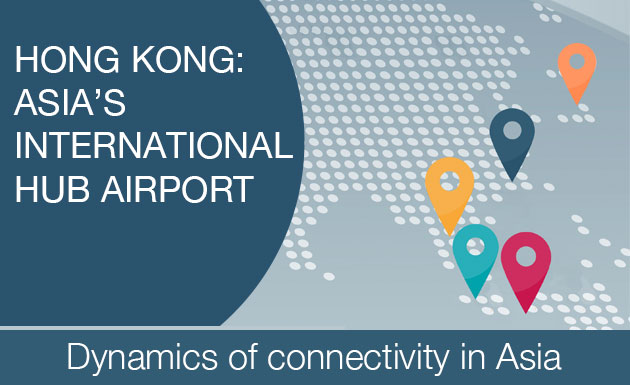OAG takes a deep dive into the traffic flows at Asia’s primary hub airports to gain a greater understanding of the dynamics of connectivity.
How are travellers using each of these airports to connect? Which connecting traffic flows are they serving well? And how is airline strategy influencing the development of these airports as hubs? We’ll be looking at each airport, starting with Hong Kong, Asia’s primary international hub airport.
As one of the world’s pre-eminent trading centres, Hong Kong has always thrived on being connected to anywhere and everywhere that people want to trade. Travel and trade go hand-in-hand and so the success of Hong Kong has always been linked to its connectedness to the rest of the world. A typical day has airlines providing almost 1,000 flights into and out of Hong Kong International Airport (HKG), and connecting the city directly with 123 other cities. This connectedness, used well, has created the most powerful hub airport in Asia, with close to 20 million passengers using it as a place to connect between flights each year.
In the twelve months to February 2017, OAG Traffic Analyser reports a total of 66.8 million passenger bookings using Hong Kong International Airport. (This figure excludes non-revenue passengers and passengers on unscheduled flights which may be recorded in other statistics). Of these, 29% were using Hong Kong Airport to connect between flights while the remaining 71% used it as the start or end of their journey. Over the year, passengers used Hong Kong as a connecting point between an incredible 2,891 country pairs.
Composition of Traffic at HKG 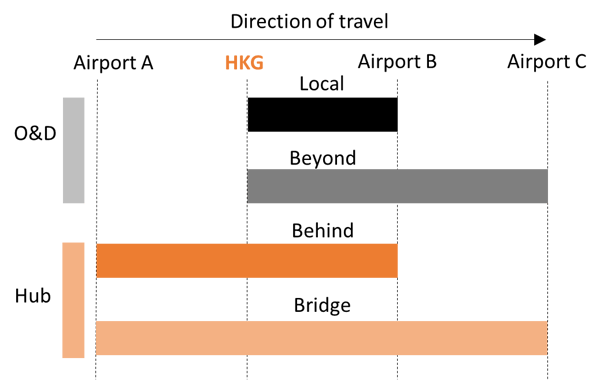
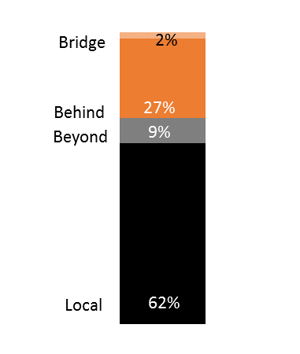
The success of the airport as a hub is almost entirely driven by the relationship with Cathay Pacific. The airline’s recent rebranding of Dragonair as Cathay Dragon, a full-service carrier with a Chinese ‘feel’ to it, is clearly designed to drive even more connecting traffic to and from China via this historic trading port. Cathay Pacific currently accounts for two-thirds (66%) of all hub bookings at the airport, and Cathay Dragon account for a further 10%. It will be no surprise that the largest single origin for connecting passengers is China, which makes up 35% of connecting flows.
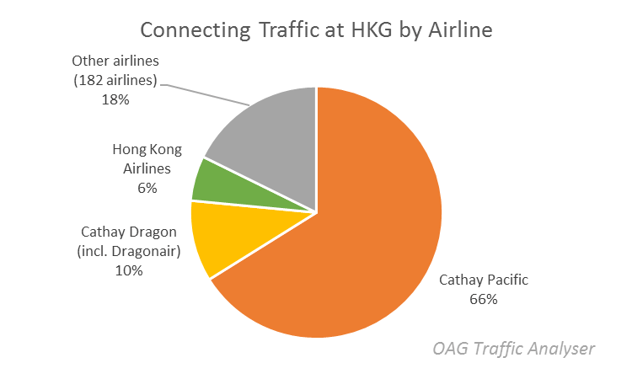
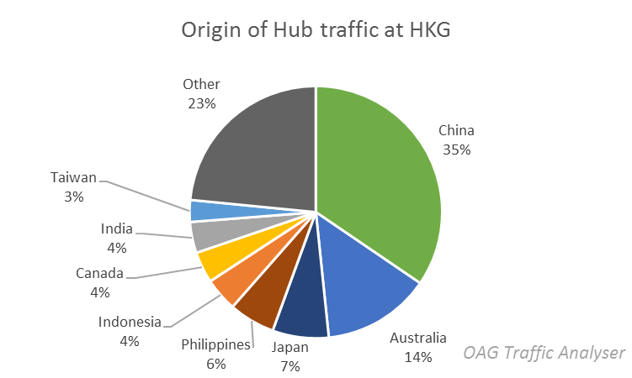
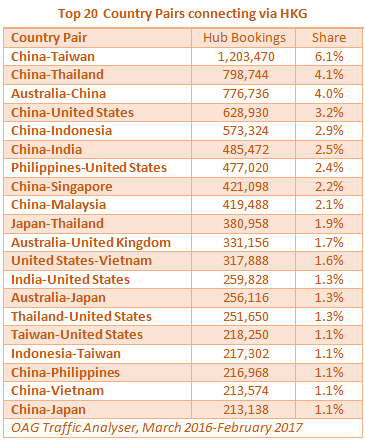
Aside from a focus on China, the connecting strategy at Hong Kong draws on the scale of long-haul connectivity at the airport with significant volumes of long-haul traffic connecting at Hong Kong. Nine of the Top 20 connecting country-pair traffic flows involve either Australia, the US or the UK.
The Oneworld position in Asia is relatively weak. Given that Cathay Pacific and Cathay Dragon contribute 76% of hub bookings, the fact that the Oneworld share of hub bookings at Hong Kong, including Cathay Pacific and its affiliates, is 81% shows that the alliance is not contributing significantly to the hub success. Having recently posted its first loss in eight years, Cathay Pacific is surely focussing on getting its strategy right and it may be no surprise if the airline is looking for a range of partnerships, sometimes outside Oneworld, as part of a hub strategy which seeks to maintain Hong Kong as the premier connecting airport in Asia. An example is the March 2017 announcement to code-share with Lufthansa, a member of the Star Alliance, which will give Lufthansa access to Cathay Pacific routes in Australia & New Zealand (SYD, MEL, CNS, AKL) for flights from MUC, VIE and ZRH, while Cathay Pacific will gain access to points beyond FRA, DUS and ZRH in Europe.
This leaves a question mark over the Lufthansa/Singapore Airlines partnership but, as we will see in the next report in this series, the hub strategy there appears to be much more regionally focussed.
Stay tuned for more insight into the Asia's Biggest Airports - Dynamics of Connectivity.


